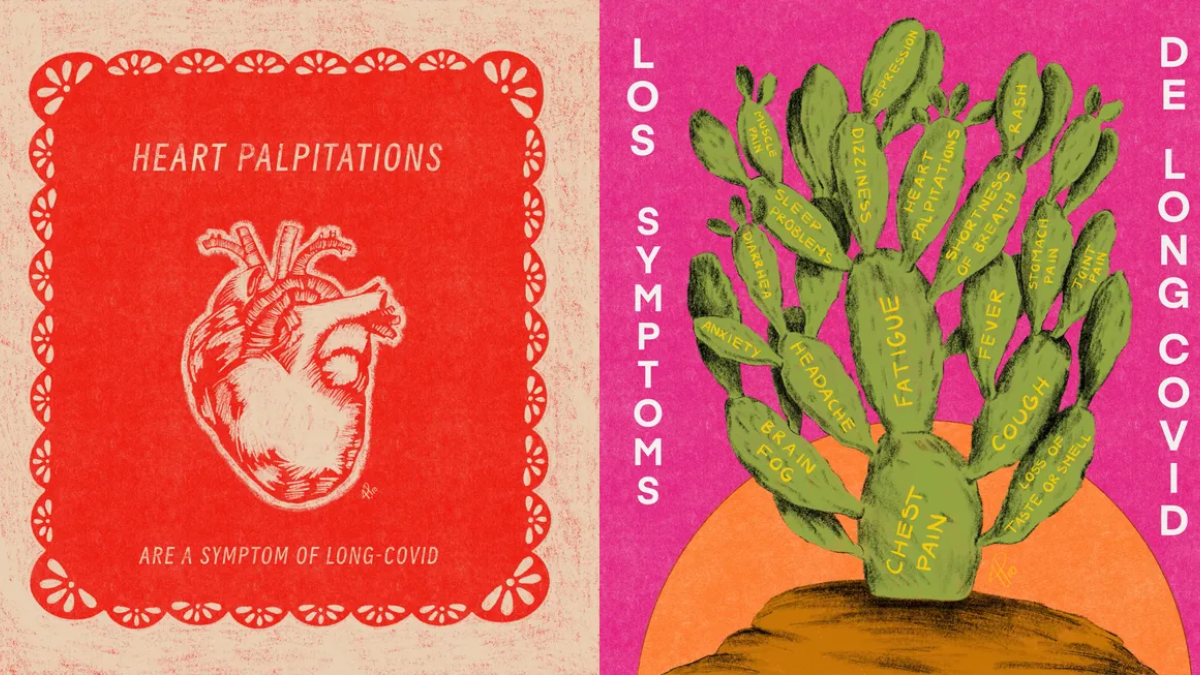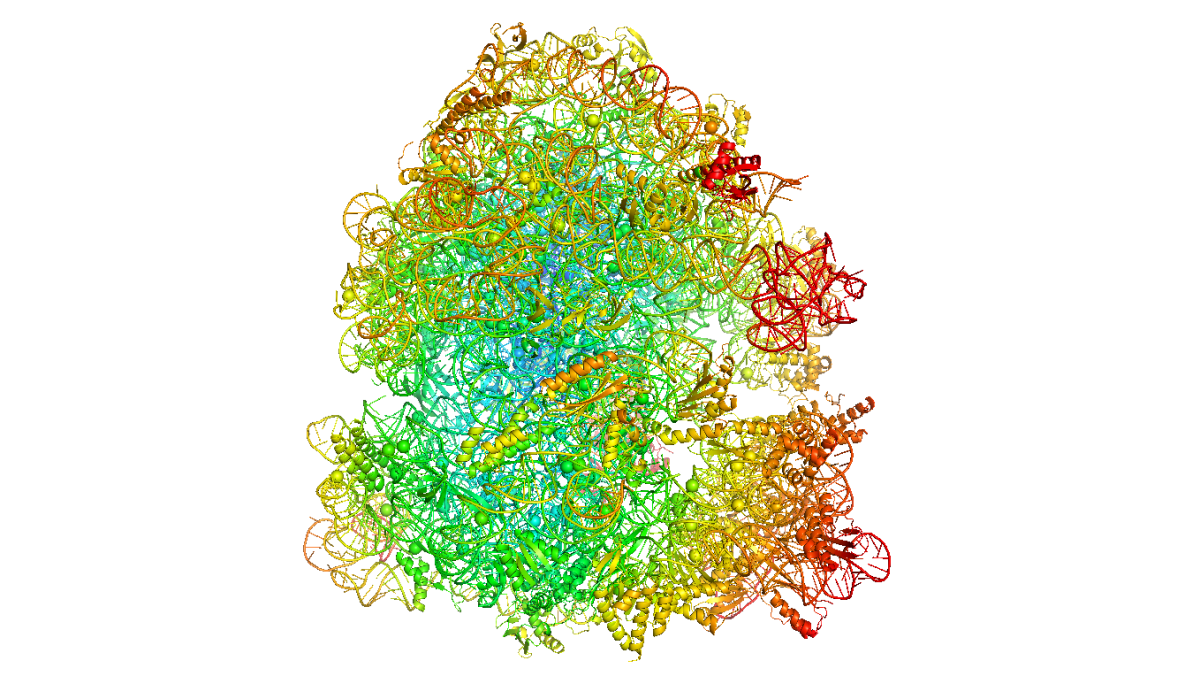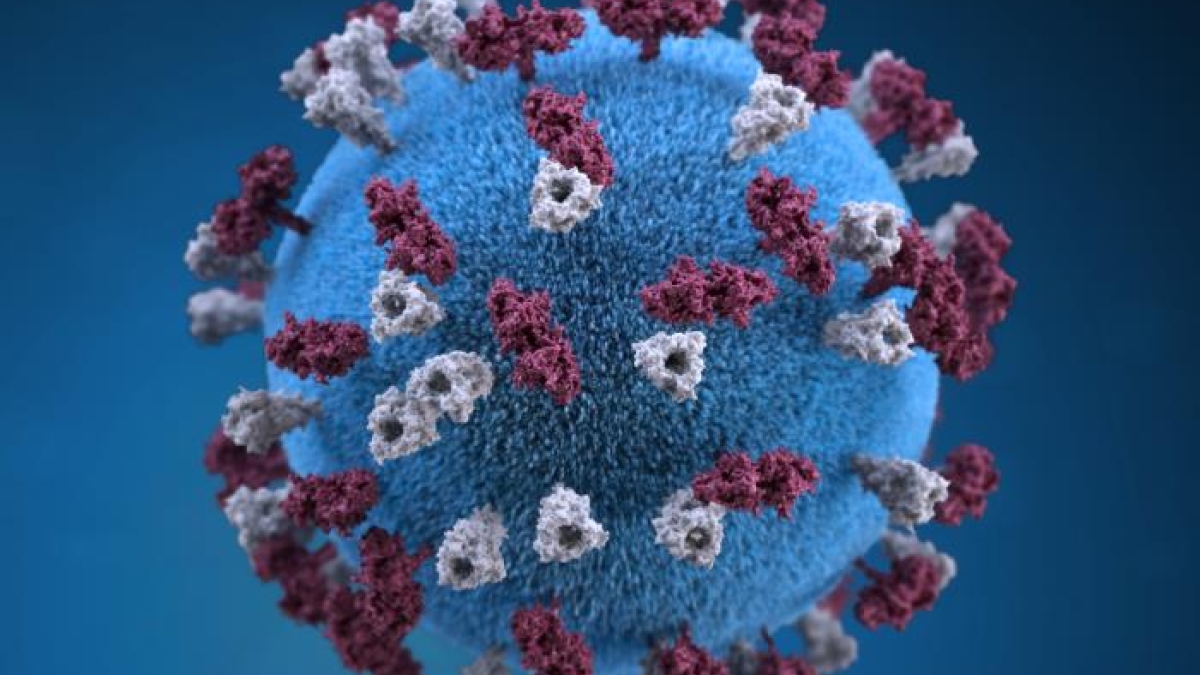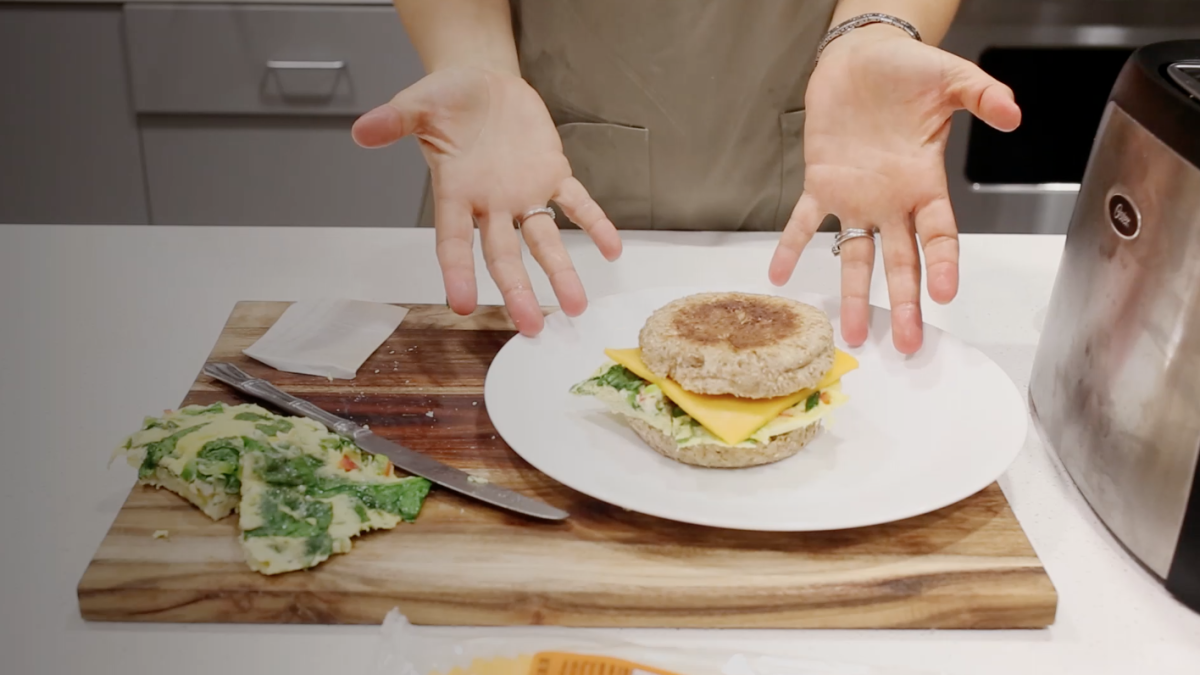Editor's Note: This is the third installment in an ASU Now series featuring nutritious recipes demonstrated by faculty from the School of Nutrition and Health Promotion, an academic unit of ASU’s College of Health Solutions. The first installment covered overnight oats, and the second installment was about electrolyte drinks.
If anyone knows a tough customer, it’s Sarah Martinelli, a clinical assistant professor of nutrition at Arizona State University. Her passion is improving food quality in school districts, where you’re likely to find some of the pickiest eaters around.
Luckily, almost everyone likes an egg sandwich. To that end, and in light of the close of finals week, Martinelli demonstrated for ASU Now a couple of tasty egg sandwich recipes that are so quick and simple they can be made in a dorm room microwave.
“They’re fast and easy but still nutritious for students looking for a good meal to start a day of test-taking,” she said.
One-Minute Egg Sandwich
Ingredients:
Cooking oil spray
1 egg
1 whole grain muffin, toasted
1 slice cheese
Directions: Spray a mug or small bowl with cooking oil, and crack an egg into it. Place it in the microwave and cook for one minute. Toast the muffin, then add the cooked egg and cheese on top. Enjoy!
10-Minute Egg Sandwich
Ingredients:
Cooking oil spray
3 eggs
1/2 cup red and green peppers, diced
Handful of spinach, ripped
1 whole grain muffin, toasted
1 slice cheese
Directions: Spray a mixing bowl with cooking oil, and crack the eggs into it. Mix well. Mix in diced red and green peppers. Rip a handful of fresh spinach into small pieces and add to egg mixture. Place the bowl in the microwave and cook for three minutes. Remove the cooked egg mixture from the bowl and let it cool slightly. Cut the cooked egg mixture into muffin-sized pieces. Toast the muffin, then add the cooked egg mixture and cheese on top. Enjoy!
The importance of nutrition to education
Before coming to ASU’s School of Nutrition and Health Promotion, Martinelli worked for a large school district in Phoenix establishing a district-wide wellness committee to address all aspects of students’ health across the school environment.
“The goal was to create a culture of health but in a way that did not overburden the staff or administration,” she said.
Back in September, a research study Martinelli is involved in with fellow nutrition Professor Punam Ohri-Vachaspati was awarded $3 million from the National Institutes of Health to examine factors influencing declines in obesity in some populations in the U.S.
The study uses detailed data about the environments in and around schools, as well as school meal participation data collected from roughly 130 low-income, high-minority public elementary, middle and high schools in four New Jersey cities from school year 2008-09 to school year 2014-15.
Martinelli also participated in the Cooking Up Change initiative, a facet of the Healthy Schools Campaign, which challenges high school students to create recipes that meet school food guidelines and budgets. In her capacity as a mentor and coordinator, she traveled to Washington, D.C. with students to compete nationally and meet with Arizona senators about keeping strong school food policies in place.
The second year of the contest, students Martinelli mentored at Barry Goldwater High School in Phoenix placed third in the national competition. She is currently working to expand the program statewide for the 2018–2019 school year.
“The best way to improve our health as a nation is to help people learn to adopt a healthy lifestyle before they get sick,” she said. “We all know that it is very difficult to change health behavior once we have established habits. I see the healthier school lunch guidelines as a chance to raise a generation of students who enjoy healthy foods — a generation that does not have to unlearn bad habits.
“I also believe that school lunch is an equity issue. For some students, this is their only reliable meal of the day … Those kids deserve to have access to a healthy well balanced meal.”
More Health and medicine

Health communication program brings long COVID awareness to Latinos
After COVID-19 hit the Latino community especially hard, Gilberto Lopez created COVIDLatino, a health communication program designed to share accurate, timely, evidence-based and culturally tailored…

Gates Foundation to fund research on antibiotic resistance
Antibiotic resistance, what happens when germs develop the ability to defeat the drugs designed to kill them, is a growing concern among scientists today. When bacteria become resistant to…

ASU epidemiologist on the rise in US measles cases
The Centers for Disease Control and Prevention issued an alert this month about a rise in measles cases worldwide. And as of March 21, a total of 64 measles cases were reported in 17 states,…
